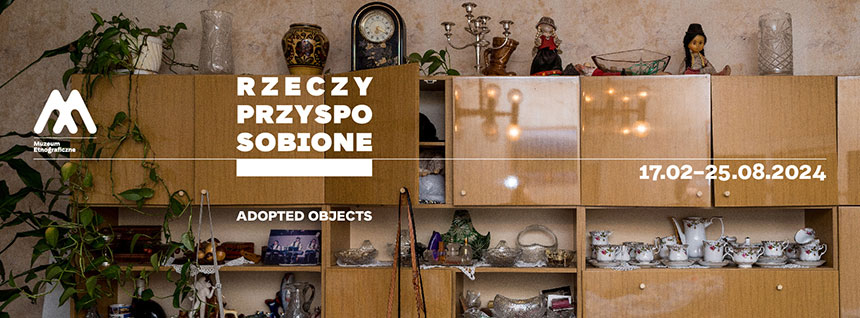The term “umojenie” (literally: “making [it] mine”) was coined by historian Robert Traba in reference to the process of Polish newcomers getting settled into their new homes in the Western and Northern Territories, of their exploring and familiarizing themselves with a new environment.
He writes: “We must first make this foreign, unfamiliar cultural landscape our own, imbue it with our own meanings, incorporate it into our own collective memory, to be able to talk about its ‘alien roots’ without fear, to acknowledge it as the German – and our common – cultural heritage.”
Carved wood bibelot depicting three Black Forest chamois
Album of photographs
courtesy of Karolina Gembara
“The kind of thing to which we would not have devoted a single thought. We were clearing grandparents’ house after their death. We had to clean the house and remove some things. Everyone wanted to take something as a keepsake. My Mum decided to have this wood sculpture of three chamois. We laughed that it was probably the ugliest thing she could have chosen. At the same time, we pondered why it had been so prominently displayed in my grandparents’ living room, perched on the TV set, and why we all had such fondness for it. I have done some research and discovered that it was the type of popular and affordable home decoration, often found in the homes of Sudeten Germans. It was produced in multiple iterations and vintage specimens can still be bought inexpensively at online auctions. This story is pretty symptomatic and I think may apply to many objects. I imagine that the German family, with whom my grandparents had shared accommodations for over year on very friendly terms before the Germans were forced to leave, could not have taken everything with them. For some reason they decided to leave the chamois behind. And my grandmother, at the time a very young woman, was likewise staying in this house, and she had not brought with her any decorative objects of her own. And for some reason, she decided to display the chamois on a chest of drawers or other piece of furniture. So, she took over this object and gave it her own value. It is kind of subversive: what had no or little value for the family that was moving out became valuable for the family who stayed. And it also has value for me because I have inherited it as a family treasure” (Karolina Gembara). Today, the bibelot is a cherished family heirloom commemorating the current owner’s grandmother who had arrived in Laski in Lower Silesia from Barysz in today’s Ukraine.
A similar relic of the past is a photo album “inherited” in the patrilineal transmission: it was found in the prewar house in which the family of the current owner’s father settled after the war. Its cover is inscribed with the word Erinnerungen (“Memories”) and features a partially damaged, torn photograph pasted on the inside front cover. The photo depicts a woman, perhaps the album’s first owner. The remaining photographs once mounted in the album were torn off and kept separately. Karolina Gębara has been trying to identify the places and people featured in these photographs. She has also been exploring her family’s migration history in her research-cum-artistic project entitled The Winter Mind.
